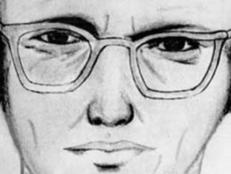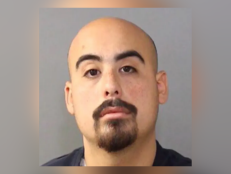Hate, Rape & Homicidal Rage: Serial Killer Carl Panzram, Who Stole The President's Gun

Wikipedia
LEAVENWORTH, KS — On the morning of September 5, 1930, Carl Panzram, 39, approached his own death with the same hyper-belligerence with which he lived — and killed.
While Panzram stood in the gallows at Leavenworth Federal Penitentiary’s execution chamber, he growled at the hangman:
"Hurry up you Hoosier bastard, I could kill 10 men while you're fooling around!"
According to Panzram himself, he had eagerly anticipated this final moment. Previously, he proclaimed:

Wikipedia
"I look forward to a seat in the electric chair or dance at the end of a rope just like some folks do for their wedding night."
The trapdoor dropped open beneath the condemned man's feet, the noose snapped his neck, and death came fast for one of humanity's most supremely heartless and unrepentant slayers.
Carl Panzram's childhood is a thing of horror. Born in 1891 to impoverished German immigrants in Minnesota, Panzram experienced severe abuse and neglect.
Stolen alcohol provided the beaten, hungry boy with his only form of comfort. Panzram's first-ever arrest occurred for being drunk in public — when he was eight years old.
At 12, Panzram burglarized a gun from a neighbor, prompting his parents to send him to a notorious Christian reform school. Staff members there savaged and sexually assaulted the students. Panzram wrote of those lessons:
"I was reformed all right ... I had been taught by Christians how to be a hypocrite, and I had learned more about stealing, lying, hating, burning and killing. I had learned that a boy's penis could be used for something besides to urinate with, and that a rectum could be used for other purposes."
That same anger, he pointed out, fueled his future penchant for setting fire to churches.
Running away in his early teens, Panzram took to riding the rails. Cops roughed him up regularly, and he reported getting gang-raped by hobos. He said the latter experience rendered him "a sadder, sicker, but wiser boy."
Upon turning 15, Panzram faked his way into the Army, and then almost immediately landed in Fort Leavenworth’s military prison for larceny. He wrote:
"Well, I was a pretty rotten egg before I went there, but when I left there, all the good that may have been in me had been kicked and beaten out of me."
From that point onward, Carl Panzram viewed everyone and everything else on earth as mere deserving outlets for his maniacal wrath.
Over the next 10 years, Panzram traveled the United States ruthlessly attacking, robbing and, most often, raping male targets. He stole absolutely anything he could get away with, from bottles of booze to pleasure boats.
Police repeatedly arrested Panzram. He fought cops and prison guards alike with utter abandon. Throughout his multitude of incarcerations, Panzram also developed a shocking talent for escaping from jail. In short order, he claimed to become equally adept at murder.
Setting his sights supremely high, in 1920 Panzram broke into the Connecticut home of U.S. President William Howard Taft.
Panzram blamed his stint in military lock-up on Taft, who had been Secretary of War, so he stole the president's bonds, jewelry and personal Colt M1911 .45-caliber pistol — a weapon the killer would put to horrific use.
Newly armed, Panzram mugged and sexually violated men at every opportunity. Using Taft’s handgun, he said he sodomized a railroad cop and then forced a group of hobos to gang-rape him. He wrote:
"Whenever I met [a target] that wasn't too rusty looking I would make him raise his hands and drop his pants. I wasn't very particular either. I rode them old and young, tall and short, white and black. It made no difference to me at all except that they were human beings."
Stunningly, Panzram netted enough money from the Taft haul to purchase the Akiska, a private yacht. He used the boat to lure sailors on leave in New York City to party with him on the water, whereupon he'd attack, rape and kill them, then dump their bodies over the side.
The high seas murder spree ceased after the Akiska crashed and sank. Panzer then hopped a ship to Africa, where he said he raped, killed and bashed the skull in of a young boy. He also claimed to have chartered a boat with six crewmen who he shot and fed in pieces to crocodiles.

Panzram: A Journal of Murder by Carl Panzram, edited by Thomas E. Gaddis and James O. Long / Amazon
Upon returning to the United States, Panzram said he raped and slaughtered a succession of four little boys along the east coast and randomly murdered residents of homes he burglarized.
Mass murder appealed to Panzram even more, especially on the most mammoth scales.
Panzram boasted of intricately planning to blow up a popular train trestle, poison the water supply of upstate New York and sink a British battleship to start war between England and the United States.
In 1928, Panzram got caught breaking into a train station. He blurted out about killing two young boys and landed a 25-year stretch at Leavenworth. Upon meeting the warden, Panzram said, "I'll kill the first man who bothers me."
That nuisance apparently turned out to be the head of the prison laundry. Panzram beat him to death with an iron bar. A court subsequently upped Panzram’s sentence to a date with the hangman. Alas, when human rights groups attempted to get Panzram off Death Row, he told them:
"The only thanks you and your kind will ever get from me for your efforts on my behalf is that I wish you all had one neck and that I had my hands on it.... I have no desire whatever to reform myself. My only desire is to reform people who try to reform me, and I believe that the only way to reform people is to kill 'em!"
He further refused any attempts to appeal or lessen his punishments.
John Lesser, a 26-year-old prison guard, proved to be the first person to ever show any kindness to Panzram that the killer could accept. The two men grew friendly, and Lesser encouraged Panzram to write down his life story, regularly slipping pencils and papers into the prisoner's cell.
Lesser kept Panzram's writings, which feature stark, terrifying prose and declarations that, while not verifiable, still chill upon reading them. Among Panzram's more frightening passages:
• "In my lifetime I have murdered 21 human beings, I have committed thousands of burglaries, robberies, larcenies, arsons, and last but not least I have committed sodomy on more than 1,000 male human beings. For all these things I am not in the least bit sorry."
• "I have broken every law that was ever made by both man and God. If either had made any more, I should very cheerfully have broken them also."
• "You will find that I have consistently followed one idea through all my life: I preyed upon the weak, the harmless and the unsuspecting."
After four decades of no publisher wanting to touch Panzram’s memoir, a collected book finally reached the public in 1970 as Killer: A Journal of Murder. It has subsequently been reissued as Panzram: A Journal of Murder.
In 1996, a movie version of Killer came out starring James Woods as Panzram, and Robert Sean Leonard as Lesser.
Jack Henry Abbott, a murderer turned jailhouse author championed by Norman Mailer, dedicated his (semi-literal) breakout book In the Belly of the Beast to Carl Panzram.
After Mailer successfully campaigned to get his protegé released from prison, Abbott stabbed a New York City waiter to death during an argument about using a restroom. Perhaps Abbott was paying some manner of grotesque, tragic tribute to his despicable notion of a "hero."
Recommended For You:
Read more:
Executed Today, Wired, Murderpedia, Annals of Crime, Panzram.com, AllThatsInteresting.com









